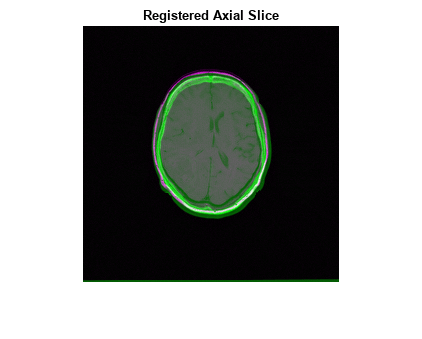imregmoment
Fast registration of grayscale images or intensity volumes using moment of mass method
Since R2022b
Syntax
Description
The imregmoment function uses the moment of mass method for
fast, similarity registration of grayscale images or intensity volumes. You can use this
function to register multimodal medical images or volumes as a preprocessing step before
multimodal medical image fusion.
Examples
Input Arguments
Output Arguments
Version History
Introduced in R2022b

